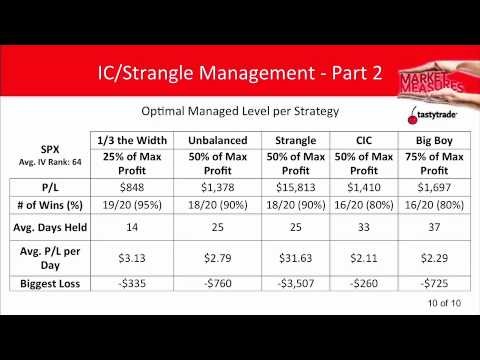Iron Condors Part V The Importance of Managing Risk Stock Trading To Go
Post on: 10 Июнь, 2015 No Comment

This is the fifth in a series of posts concerning iron condors and how to trade them. It’s exciting to learn new option strategies. Because a new method is a fresh idea for the trader/investor, the profit potential often encourages traders to get carried away, believing it’s so easy to make money. And the truth is that iron condors are constructed (by most traders) so that there’s a high probability of success. But I hope to convince you: that’s not good enough, and you must have a better understanding of the potential risks and rewards before you begin trading. I trade iron condors all the time – but with open eyes.
Why 80% Success Isnt So Great
When you initiate a new position for which the probability that the entire iron condor expires worthless is 80%, then about 80% of the time you will keep every penny of the premium collected. But, there’s still that 20% chance that either the put or call spread will finish in the money. Is that a great situation? No, it’s not. How well you manage risk and the size of the losses is the determining factor in the profitability of trading this (or any other) strategy.
Why is that a problem when you win four times out of five?
- Each loss is likely to be much larger than your maximum gain.
- When the probability of winning is high, too often the cash premium you collect is small. That translates to a poor risk/reward situation.
Example
Buy the following iron condor, collecting $200.
With seven weeks before expiration, GOOG was trading near 417:
Sell Jul 350/360 put spread, collecting $1.05
Sell Jul 470/480 call spread, collecting $1.10

***NOTE: This spread was chose arbitrarily and is NOT a recommended trade
Maximum profit: $215
Maximum loss: $785
For the sake of argument, let’s say that the above numbers are satisfactory and the trade fits within your comfort zone. If you collect $215 four times and lose (on average) something less than $785 once, the total profit isn’t large. In fact, it would be too small for me. But, let’s assume that you are satisfied that the reward justifies taking the risk.
One More Problem
There’s one significant problem not yet mentioned. Many times, the underlying stock, GOOG in this example, may move to ‘touch’ the strike price of one of the options that you sold. If GOOG trades @ 360 or 470, you may find that it’s very uncomfortable to hold the position. The risk of additional loss (when the stock touches the strike, you are already losing money) is now unfavorable, and you may (wisely) decide to make an adjustment to the position – to reduce risk. One method for adjusting the position is to take your loss and move on to the next trade.
If you take that intelligent step of reducing risk when it becomes too large, then the arithmetic above becomes invalid. It’s true that you are no longer in danger of losing he maximum, but neither will you collect the entire ($215 in the example) cash premium as often as 80% of the time.
Concluding Notes
Although the probability of GOOG finishing between the strike prices may have been 80% when you started, the probability that it will touch either strike during the lifetime of the options is approximately 40% [as a very good estimate, the probability of touching one of the strikes is double the probability of finishing in the money ITM. Thus 20% ITM at expiration means 40% probability of touching.]
If you exit the position with a significant loss 40% of the time, you are not going to be successful when trading iron condors. Exiting the trade is merely one of your alternatives, and there are other adjustment choices. Those choices will be the subject of future posts. The point to take away from this post is: Someone may tell you that they can promise profits 80 to 90% of the time, but the real question to ask is whether the strategy has been profitable.














